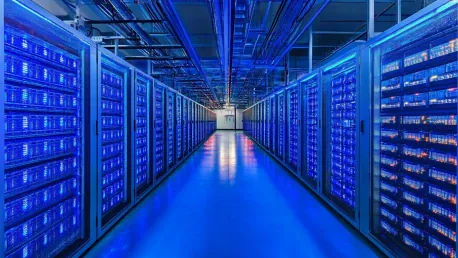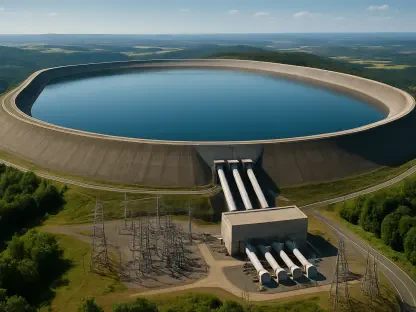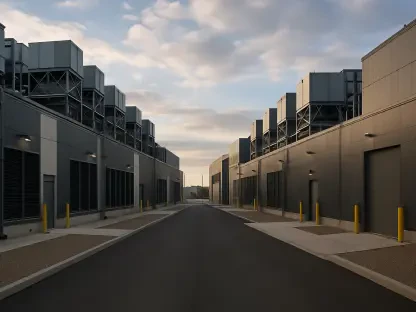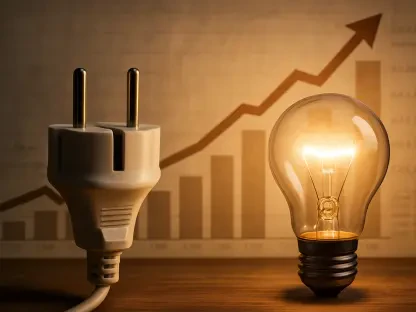The powerful influence of big tech companies on our daily lives has extended beyond digital domination, now significantly impacting physical infrastructure, particularly the energy sector. Julianne Malveaux’s thought-provoking article brings this pressing issue to the forefront, emphasizing the urgent need for state regulators, energy firms, and policymakers to address the burgeoning energy demands of data centers and similar entities to avoid unfairly burdening everyday consumers. As data centers proliferate to support the rapidly expanding digital economy, the strain on energy infrastructure continues to grow, complicating the relationship between technological progress and the equitable distribution of energy costs.
Exponential Growth of Data Centers
The digital economy is undergoing an unprecedented expansion, driven by data centers that power generative AI, cloud computing, and other technologies requiring immense computing power. This surge in energy demand has necessitated significant upgrades to infrastructure. An analysis by Bain & Co. projects that meeting U.S. data center energy demands may require a 26% increase in annual generation capacity by 2028, a stark contrast to the historical 5% yearly increase seen over the past two decades.
This growth is not merely a technical challenge but also a profound financial one. Investing in the infrastructure necessary to support expanding data centers is tremendously costly. As data centers continue to multiply, the existing energy grid comes under increasing pressure, necessitating substantial investments in newer, more robust infrastructure. The rapid pace of technological advancements exacerbates this issue, raising questions about long-term sustainability and financial viability.
Cost Implications for Consumers
The financial burden of necessary infrastructure upgrades is poised to elevate consumer energy bills significantly. Without intervention, the predicted 1% yearly rise in energy bills through 2032, while seemingly minor on an individual basis, can lead to substantial financial strain over time. For households already coping with high energy costs, this incremental increase, compounded over years, could represent a serious economic burden.
Moreover, the cost implications extend beyond the direct rise in energy bills. Indirect costs, such as investments in robust energy infrastructure and potential increases in maintenance and operational expenses, further contribute to the financial strain on consumers. This complex web of expenses calls for a critical reevaluation of how the costs are distributed and who should bear the brunt of these necessary upgrades. Ensuring a fair distribution of these expenses is essential to support both consumer welfare and the sustainable growth of the tech industry.
Case Study – Ohio’s Approach
In an attempt to address the escalating energy costs associated with data centers, American Electric Power (AEP) in Ohio has proposed that data centers prepay 85% of their projected energy usage every month. This innovative measure seeks to prevent hefty infrastructure costs from being passed on to regular consumers, ensuring that data centers take on a significant portion of their energy costs upfront.
While this approach is creative, it comes with its own set of challenges. Data centers have argued that such measures could stifle investment and growth within the tech sector. Despite these concerns, the counterargument holds that without such interventions, the financial burden on ordinary consumers might become unsustainable. Ohio’s strategy offers a potential model for other states dealing with similar issues, balancing the financial responsibilities between data centers and consumers more equitably.
Policy Recommendations for Fair Distribution
Malveaux proposes that new policies should mandate that tech giants absorb the additional costs instead of passing them on to the public. She suggests implementing a temporary tax on high-usage energy consumers, such as data centers and cryptocurrency miners. The revenue generated from such a tax could fund energy relief initiatives for current consumers, ensuring a more equitable distribution of financial burdens.
Additionally, encouraging the adoption of renewable energy by data centers can help mitigate the stress on the grid. By investing in on-site renewable energy sources, tech companies can reduce their dependence on the existing energy infrastructure, thereby alleviating some of the demand pressures. This approach not only supports environmental sustainability but also helps manage overall energy demand more effectively, creating a win-win scenario for both the grid and consumers.
Overarching Trends and Corporate Responsibility
There’s a growing consensus that the unchecked expansion of data centers will lead to unsustainable energy costs. This situation necessitates a proactive approach, with stringent policies on tech companies essential for ensuring corporate responsibility in energy consumption. The trend towards taxing the primary beneficiaries of infrastructure upgrades signifies a shift towards greater accountability in energy use.
Tech companies have raised concerns that higher energy rates are discriminatory and could dampen investment. However, Malveaux strongly emphasizes the necessity of fair treatment and the protection of ordinary energy consumers. Collaboration opportunities exist where tech companies can lead the clean energy revolution by adopting on-site renewable energy generation. Such an approach benefits both the environment and the overall energy grid, creating a more sustainable and fair energy landscape.
Main Findings and Objective Analysis
The immense influence of big tech companies now extends beyond their digital realms into the very fabric of our physical infrastructure, especially the energy sector. Julianne Malveaux’s insightful article highlights this critical issue, underscoring the necessity for state regulators, energy companies, and policymakers to address the escalating energy needs of data centers and similar entities. Failure to do so may result in unfair energy cost burdens on average consumers.
As the digital economy expands, the number of data centers grows, placing increasing strain on our energy infrastructure. This situation complicates the balance between technological advancements and the fair distribution of energy costs. Addressing this challenge requires a collaborative effort from various stakeholders to ensure that the energy demands of tech giants do not disproportionately impact everyday people. This collaboration is essential to foster a sustainable technological future where progress does not come at the expense of equity and fairness in energy consumption.









